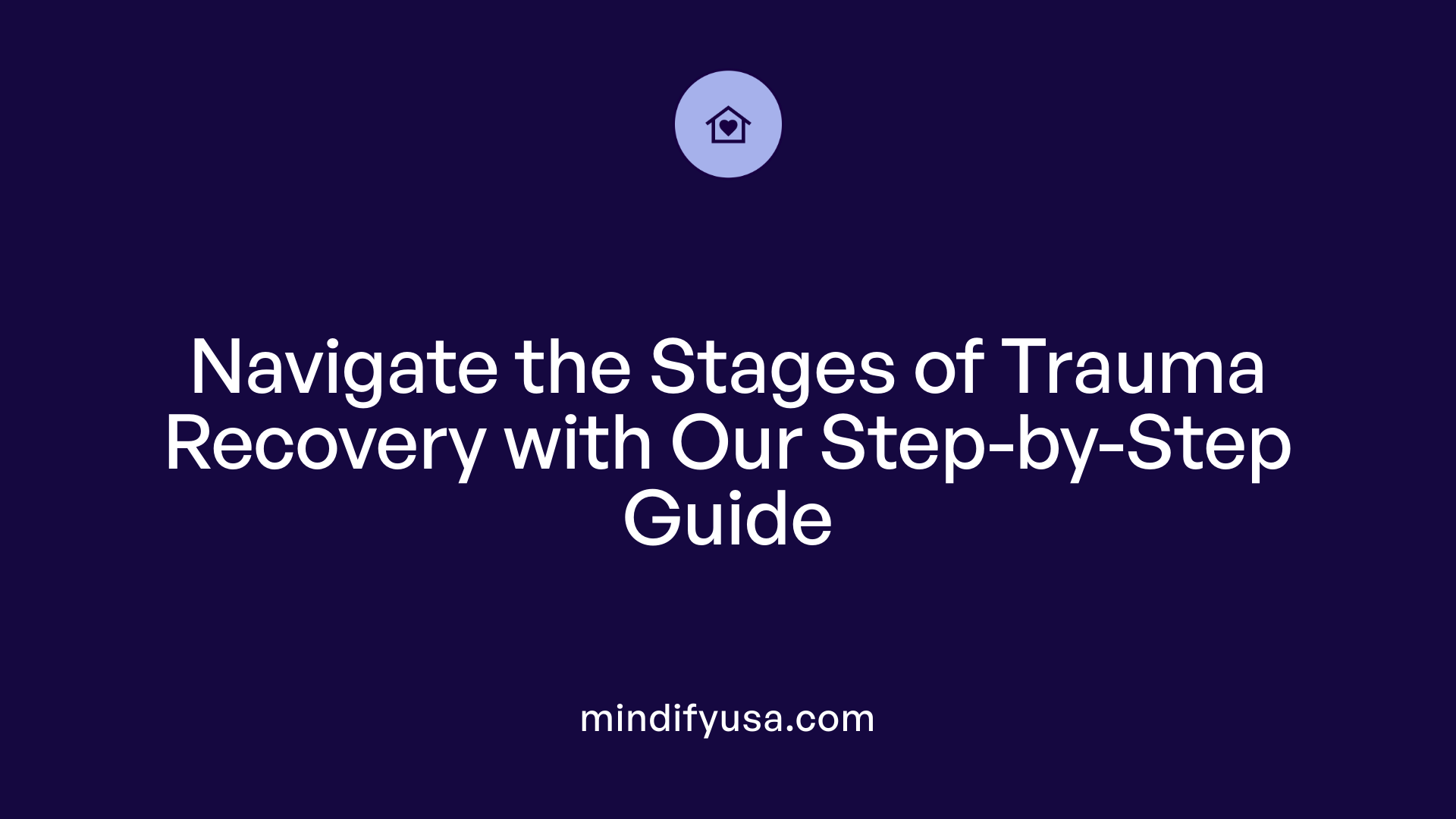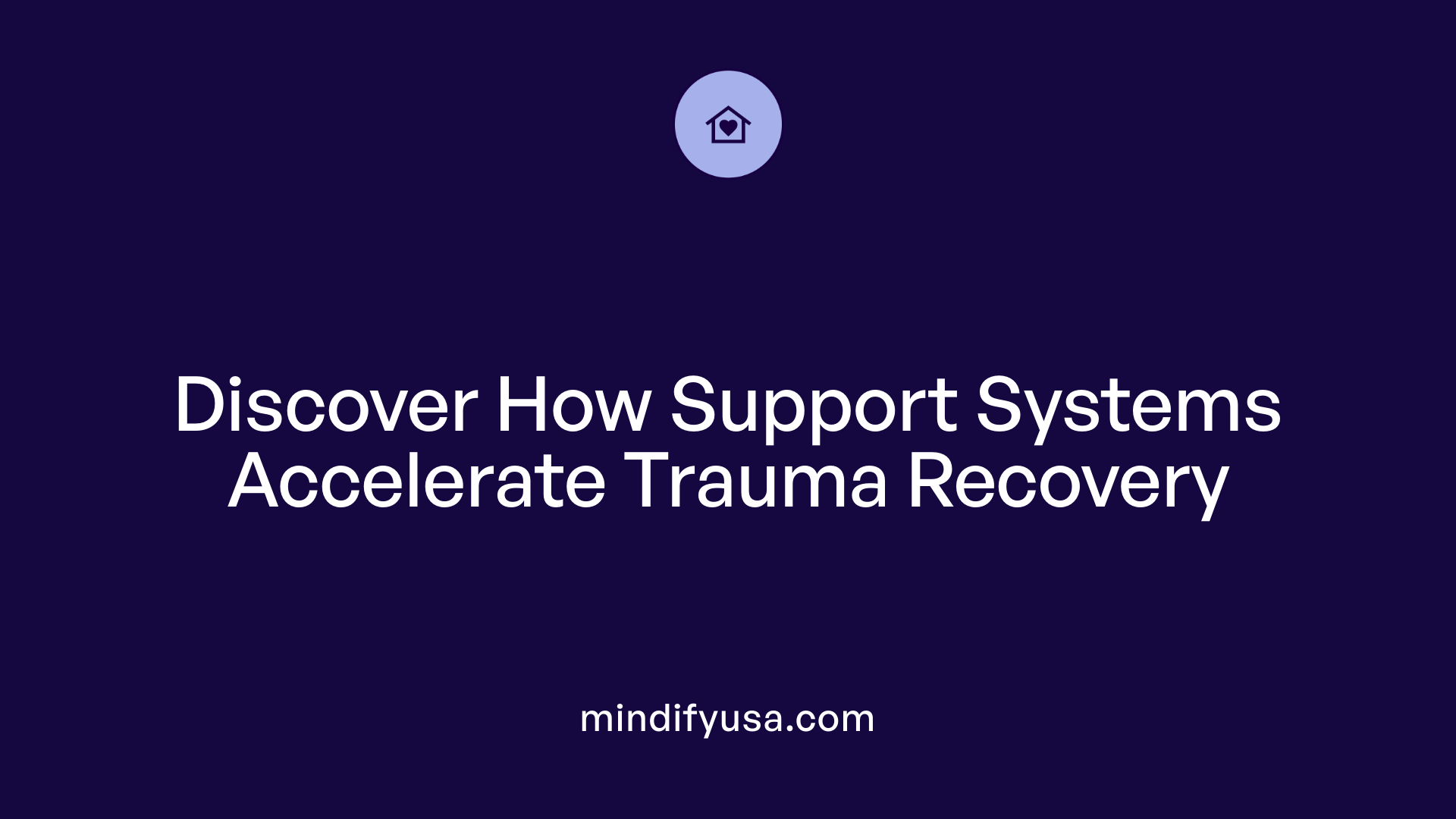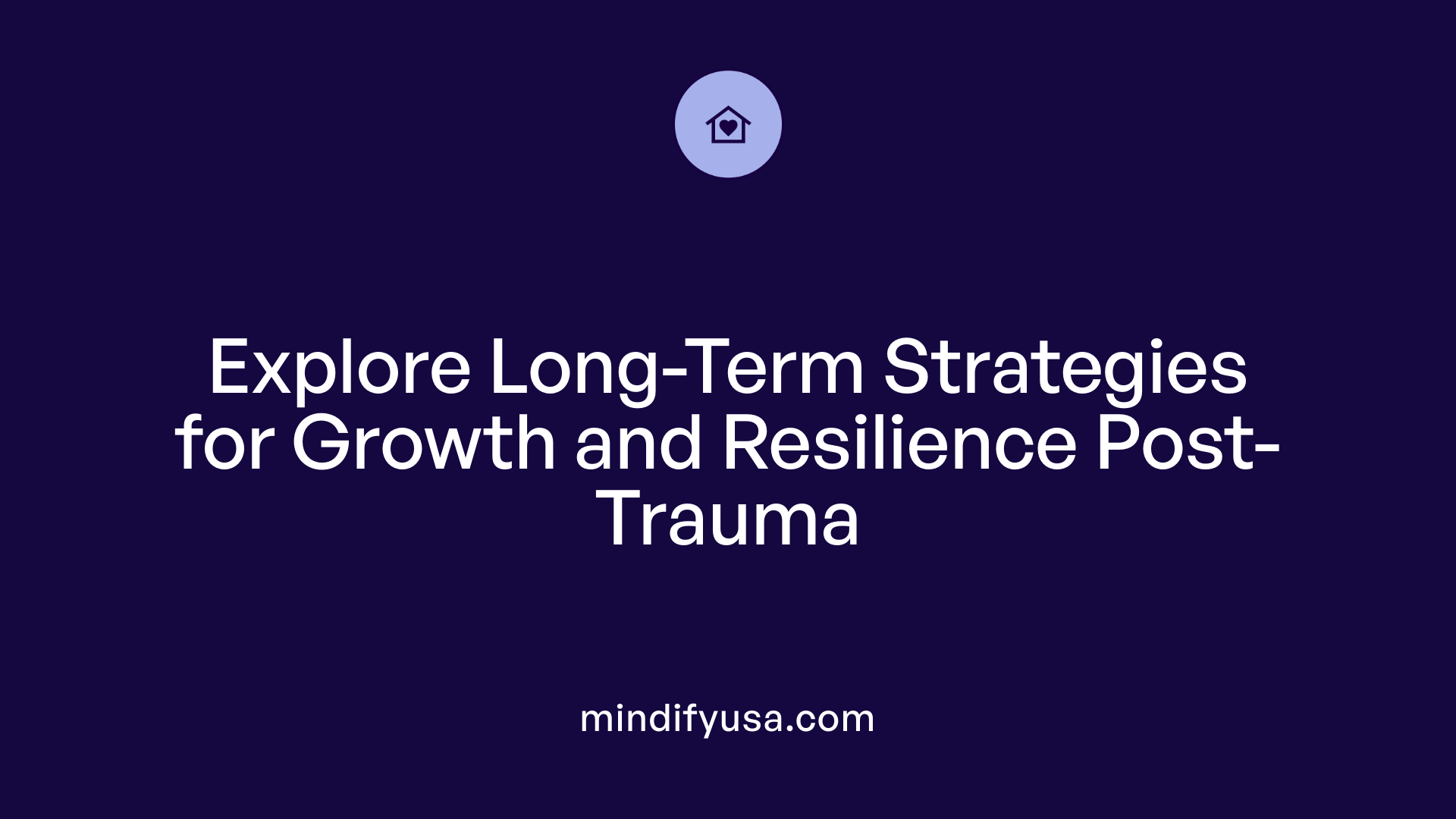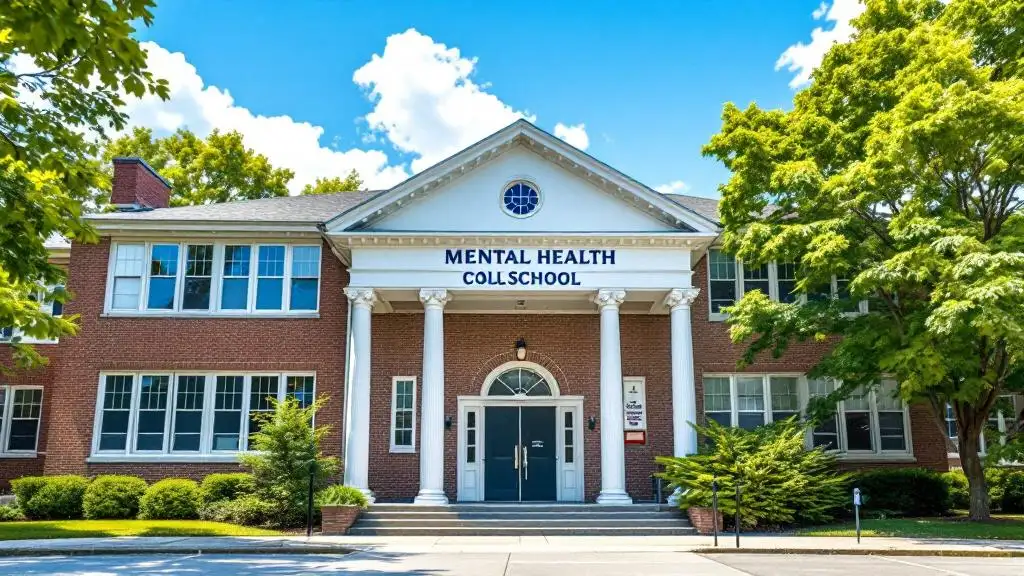Understanding Trauma and Its Impact
Traumatic events, such as natural disasters, violence, accidents, or loss of loved ones, can leave lasting emotional and physical scars. The initial shock and distress often make recovery seem daunting, but understanding the processes involved can empower survivors to heal and rebuild their lives.
The Psychological and Emotional Effects of Trauma
What are the stages of trauma recovery?
Trauma recovery is a complex process that involves several interconnected stages aimed at restoring emotional and psychological well-being. Initially, individuals work towards Safety and Stabilization, establishing a sense of security and developing coping skills. This phase often includes practices such as mindfulness, breathing exercises, yoga, and grounding techniques to soothe the nervous system and regain control.
Following this, they engage in Remembrance and Mourning to process their traumatic experiences. This step involves exploring and mourning losses, making meaning of the trauma, and often working with therapy to avoid re-living the pain or disconnecting from emotions. Care must be taken to ensure safety, preventing emotional overwhelm.
The next phase, Reconnecting and Integrating, emphasizes rebuilding relationships, redefining personal identity, and finding purpose beyond the trauma. This stage helps individuals recognize trauma’s impact without allowing it to define their entire life story, fostering empowerment.
Finally, consolidation involves integrating the trauma into one's life narrative, fostering resilience, and possibly experiencing post-traumatic growth. It includes accepting new strengths, cultivating hope, and often involves celebrating new life perspectives. This comprehensive approach supports lasting recovery, acknowledging that healing can take time and various forms.
Recognizing When Professional Help Is Needed

What are the signs that indicate a need for professional support after experiencing trauma?
Trauma affects everyone differently, and while many people gradually recover, certain signs signal that it may be time to seek help from a mental health professional. Persistent symptoms such as recurring flashbacks, nightmares, sleep disturbances, and heightened anxiety or depression can interfere with daily life and warrant professional intervention.
Physical health issues are also common cues. Headaches, stomach pains, difficulty sleeping, racing heart, and feelings of jumpiness or hyperarousal might be signs that trauma is impacting the body. When these physical symptoms persist alongside emotional struggles, consulting a healthcare provider is advisable.
Behavioral changes can further indicate the need for support. Avoidance of activities or places reminding you of the trauma, social withdrawal from friends and family, increased substance use like alcohol or drugs, and risky behaviors such as unsafe sexual activity or reckless driving are red flags that your mental health needs attention.
For children who have experienced trauma, specific reactions such as bed-wetting, acting out during play, becoming clingy, or having difficulty talking are signs that they may need specialized help. Young children cannot always express their feelings verbally, making these behavioral cues especially important.
Recognizing these signs early and seeking appropriate care can prevent trauma symptoms from worsening or developing into post-traumatic stress disorder (PTSD). It’s crucial to pay attention to the ongoing impact of traumatic events on your emotional, physical, and behavioral well-being.
What are the stages of trauma recovery?
Trauma recovery is a complex journey that involves several interconnected phases. It starts with Safety and Stabilization, where individuals regain a sense of security and learn coping strategies such as mindfulness and breathing exercises. Building this foundation helps manage intense emotions and physical responses.
After establishing safety, the next phase is Remembrance and Mourning. During this stage, people process their traumatic experiences, often with the support of therapy. This involves mourning losses, understanding emotional responses, and making meaning from the trauma. Safe exploration of these memories is crucial to avoid overwhelming feelings.
Following emotional processing, the Reconnection and Integration phase focuses on rebuilding relationships, redefining one’s identity, and creating a meaningful future. This might include developing new goals, establishing routines, and fostering resilience.
The final stage, Consolidation and Resolution, involves integrating the trauma into one's life story without allowing it to dominate. It’s about accepting the past, recognizing growth, and moving forward with renewed confidence.
Recovery is not strictly linear—individuals may move back and forth between these phases. Patience, self-compassion, and support are essential components throughout this process.
Will I ever be normal after trauma?
Many wonder whether recovery means returning to what felt like normal before the traumatic event. The truth is, healing from trauma doesn’t necessarily mean becoming exactly the same as before. Some symptoms, like flashbacks, anxiety, or emotional numbness, may persist for years.
However, this does not imply that life cannot improve. Many survivors learn to manage their reactions effectively through therapy, support groups, mindfulness, and self-care strategies. They develop a toolbox of techniques to handle triggers and reduce distress.
Understanding that recovery is often non-linear is important. Progress may involve days of feeling better and setbacks, especially when encountering reminders of the trauma. Over time, with patience and persistence, individuals are often able to live meaningful, balanced lives—even if some challenges remain.
Many survivors find that through work on healing, they cultivate resilience, gain new perspectives, and sometimes experience post-traumatic growth—positive psychological changes that enhance their sense of strength, relationships, and appreciation of life.
In essence, while “normalcy” might be a moving target, many people achieve a fulfilling life post-trauma, characterized by stability, purpose, and well-being. The focus is on living well despite the lingering impact of past experiences, rather than erasing all memories or feelings associated with trauma.
Effective Coping Strategies and Self-Care Practices

What are the stages of trauma recovery?
Trauma recovery is a complex journey that unfolds in multiple phases, each vital for restoring emotional and psychological health. The first stage, Safety and Stabilization, centers on reestablishing a sense of security and learning how to manage overwhelming emotions.
During this phase, individuals may practice mindfulness, grounding techniques, yoga, acupuncture, meditation, or spiritual ceremonies to soothe the nervous system. A metaphor often used is carefully releasing pressure from a shaken soda bottle to prevent an explosion, emphasizing the importance of gradual de-escalation.
Following stabilization, the next stage is Remembrance and Mourning. Here, individuals process their traumatic experiences, make meaning from them, and mourn any losses involved. Safety remains important during this phase to prevent emotional overwhelm. Therapeutic support can help to explore and mourn these losses without re-living the trauma or disconnecting from emotions.
The third phase, Reconnection and Integration, involves creating a new sense of self and future. It emphasizes recognizing trauma's impact while not allowing it to define one’s entire life. This stage encourages steps toward empowerment, rebuilding relationships, and establishing personal goals.
Finally, the Consolidation and Resolution phase focuses on integrating the trauma into one's life story. It fosters resilience, acceptance, and even personal growth, allowing survivors to reclaim control and find meaning in their experiences.
Will I ever be normal after trauma?
Many wonder if healing means returning to a pre-trauma state of normalcy. The truth is, healing does not necessarily entail becoming 'normal' again because some symptoms and effects may stay with individuals for a long time.
Instead, recovery involves learning how to live with and manage these reactions effectively. The process is rarely linear—progress may include moments of growth, setbacks, and ongoing triggers, especially for those with childhood trauma.
Survivors can develop valuable strategies, including therapy, self-care routines, mindfulness practices, and trigger management. Building awareness of one's emotional landscape and understanding personal responses can foster resilience.
While full eradication of trauma effects might be unlikely, many people find that, with patience, support, and persistence, they can lead meaningful, balanced lives. Cultivating self-compassion and regaining a sense of agency is central to this journey.
Ultimately, the goal is not to forget trauma but to develop strength and coping skills that enable a richer, more hopeful life despite past hardships.
Stages of Trauma Recovery: A Step-by-Step Process

What are the stages of trauma recovery?
Trauma recovery is a complex journey that involves multiple stages, each focusing on different aspects of healing—emotionally, psychologically, and physically. The process is often non-linear, meaning individuals may move back and forth between stages or revisit them as needed.
The first phase, Safety and Stabilization, aims to help individuals regain control over their emotional responses. It involves establishing a sense of safety, managing intense feelings, and learning techniques like mindfulness, breathing exercises, grounding practices, and relaxation methods. These practices help soothe the nervous system, reduce hyperarousal, and create a foundation for recovery.
Once stability is attained, individuals move into the Remembrance and Mourning stage. Here, the focus is on processing traumatic memories, understanding their impact, and mourning any losses or unresolved feelings. Through therapy, counseling, or support groups, they explore their experiences safely, making sense of their trauma without becoming overwhelmed. This stage encourages acknowledgment of pain while maintaining safety measures to prevent re-traumatization.
The third stage, Reconnection and Integration, involves rebuilding relationships and a positive sense of self. It encourages creating new, meaningful connections, redefining personal identity beyond the trauma, and fostering resilience. Activities like establishing routines, engaging in hobbies, and exploring personal goals help reinforce a sense of purpose and empowerment.
Finally, Consolidation and Resolution focus on integrating the trauma into one's life story. It involves accepting the experience as part of the person’s history while cultivating growth and acceptance. Individuals learn to recognize their strength, develop new coping skills, and often experience post-traumatic growth—finding new meaning, deeper relationships, or a renewed sense of appreciation for life.
This structured approach guides individuals through recovery, emphasizing patience, self-compassion, and gradual progress.
Will I ever be normal after trauma?
Many survivors wonder if they will ever return to what they consider “normal.” It’s important to understand that healing from trauma does not necessarily mean erasing all symptoms or effects. Instead, it involves learning to manage and adapt to reactions that may persist.
The healing process is often characterized by fluctuating progress, with moments of growth interspersed with setbacks. Symptoms such as flashbacks, nightmares, emotional numbness, or avoidance may remain for some time, but their intensity usually diminishes.
Most individuals develop effective coping strategies—such as engaging in therapy, practicing mindfulness, maintaining routines, and building supportive relationships—that help them regain a sense of control and stability.
It's also vital to cultivate self-compassion and patience. Recovery involves redefining what “normal” means for each person. Many find that, despite lingering challenges, they can lead fulfilling lives, feel more resilient, and experience joy again.
In summary, complete
The Role of Support Systems in Trauma Recovery

What are the stages of trauma recovery?
Trauma recovery is a complex process that involves several interconnected stages aimed at restoring emotional and psychological well-being. Initially, individuals work towards Safety and Stabilization, establishing a sense of security and developing coping skills. This foundational phase emphasizes creating a safe environment, regulating difficult emotions, and employing practices such as mindfulness, breathing exercises, yoga, and grounding techniques to soothe the nervous system.
Following this, they engage in Remembrance and Mourning to process their traumatic experiences. During this stage, individuals explore and mourn their losses, making meaning of their trauma while consciously avoiding re-living the events or disconnecting from feelings. Therapeutic support, including trauma-focused therapies like EMDR or cognitive-behavioral therapy, often facilitates this process.
The next phase, Reconnecting and Integrating, centers on creating a new sense of self and future. This stage involves recognizing trauma's impact but not letting it define life goals or relationships. Instead, individuals focus on empowerment, rebuilding trust, and fostering personal growth.
Finally, the stages of Consolidation and Resolution involve integrating the trauma into one’s life story, fostering resilience, and cultivating a sense of acceptance or growth. This phase promotes using past experiences as a foundation for increased strength, deeper relationships, and a more meaningful life.
Will I ever be normal after trauma?
Healing from trauma does not necessarily mean returning to a pre-trauma state of being labeled as 'normal.' Many survivors adjust to their new reality with ongoing symptoms and challenges. Recovery is typically non-linear, characterized by moments of progress, setbacks, and gradual acclimation.
Many individuals experience persistent reactions like flashbacks, anxiety, or emotional numbness, especially ongoing effects of childhood trauma or complex PTSD. The goal of recovery is to learn effective coping strategies—such as engaging in therapy, practicing mindfulness, maintaining routines, managing triggers, and fostering self-compassion—that help manage symptoms.
Over time, with support and effort, survivors can lead balanced, satisfying lives. They often develop a sense of agency, resilience, and acceptance, recognizing that trauma’s presence might be enduring, but it does not have to dominate their lives.
Many find that focusing on personal growth, meaningful relationships, and ongoing self-care allows them to thrive despite remaining symptoms. Ultimately, healing involves adaptation rather than complete eradication of trauma effects, with many people reaching a state of well-being and fulfillment.
Long-Term Strategies and Personal Growth Post-Trauma

How does trauma recovery progress through different stages?
Trauma recovery is a multifaceted journey involving several milestones aimed at restoring emotional stability and personal strength. It begins with Safety and Stabilization, where individuals focus on establishing a sense of security, regulating intense emotions, and building coping skills like mindfulness, yoga, and grounding techniques to soothe the nervous system.
The next phase, Remembrance and Mourning, involves processing the traumatic experience. This stage encourages exploring feelings, mourning losses, and making meaning of the trauma—often with guidance from mental health professionals—while safeguarding against emotional overwhelm.
Following this, Reconnecting and Integrating centers on recovering personal relationships, redefining identity beyond the trauma, and fostering hope. This phase emphasizes creating a new sense of self, recognizing the impact of trauma but not letting it completely define one’s life.
The final stage, Consolidation and Resolution, entails weaving the trauma into the broader life story in a way that promotes resilience, acceptance, and sometimes growth. It involves ongoing reflection, embracing new perspectives, and developing a resilient outlook that acknowledges past pain while focusing on future potential.
A Journey Worth Taking
Recovery from traumatic events is a highly individualized journey that requires patience, compassion, and resilience. While a complete return to the pre-trauma state may be unlikely, many survivors find that they can develop new strengths, deepen relationships, and rediscover purpose. Recognizing the stages of recovery and understanding when to seek professional help empower individuals to take active steps toward healing. The support of loved ones, community, and mental health professionals plays a crucial role in facilitating progress. Ultimately, embracing self-care, staying hopeful, and acknowledging each milestone can lead to meaningful recovery and a renewed sense of life.
References
- Coping With Traumatic Events - National Institute of Mental Health
- Self-Care and Recovery After Trauma - WebMD
- Emotional and Psychological Trauma - HelpGuide.org
- Trauma - help for your reaction and recovery | Better Health Channel
- Phases of Trauma Recovery
- Coping with Traumatic Stress Reactions - PTSD: National Center for ...
- [PDF] Helping yourself after a traumatic event - Phoenix Australia
- HOPE & COPING After Traumatic Events - NAMI Maine - Mental Health
- 10 Tips on How to Heal from Emotional Trauma - Westwind Recovery
- Understanding the Impact of Trauma - NCBI






































































































